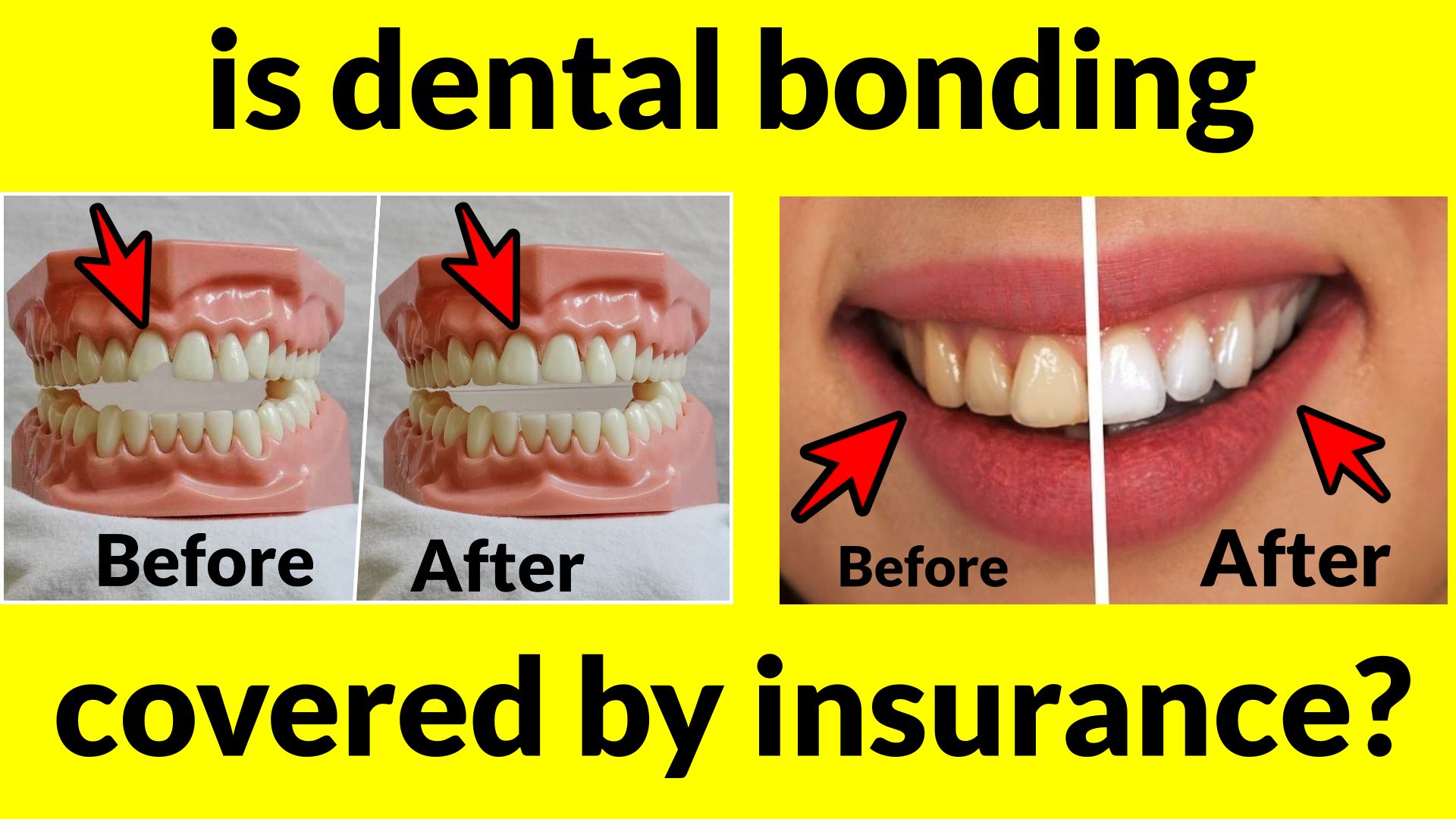Dental Bonding Coverage
)
Will dental insurance cover bonding – Dental bonding is a common procedure that uses a tooth-colored composite resin to repair chipped, cracked, or discolored teeth. While dental bonding can be a cost-effective solution, it’s important to understand how dental insurance typically covers this procedure.
Dental Bonding Coverage
Most dental insurance plans cover dental bonding to some degree. However, the specific coverage can vary depending on the plan’s terms and conditions. Typically, dental insurance plans cover a portion of the cost of dental bonding, with the policyholder responsible for the remaining balance.
Common Exclusions and Limitations
Dental insurance plans often have exclusions and limitations related to dental bonding coverage. Some common exclusions include:
- Cosmetic Bonding:Many dental insurance plans do not cover bonding for purely cosmetic reasons, such as improving the appearance of a tooth’s shape or color.
- Multiple Bonding Procedures:Some plans may limit the number of bonding procedures covered in a given time period.
- Pre-Existing Conditions:Bonding may not be covered if the tooth damage is due to a pre-existing condition, such as bruxism (teeth grinding).
Examples of Coverage
Here are some examples of situations where dental bonding may be fully or partially covered:
- Repairing a Chipped Tooth:If a tooth is chipped due to an accident or injury, dental bonding may be covered to restore the tooth’s function and appearance.
- Closing Gaps Between Teeth:Bonding can be used to close small gaps between teeth. This procedure may be partially covered by insurance, depending on the plan’s specific terms.
- Covering Discoloration:Bonding can be used to cover discoloration caused by stains or trauma. However, coverage for this purpose may be limited, especially if the discoloration is considered cosmetic.
Factors Affecting Coverage
Dental insurance coverage for bonding is influenced by a variety of factors, including the existence of pre-existing conditions, the type of dental insurance plan, and the specific procedures involved. Understanding these factors can help individuals determine the extent of their coverage and make informed decisions about their dental care.
Pre-Existing Conditions
Pre-existing conditions can significantly impact dental bonding coverage. If a patient has a pre-existing condition that affects their teeth or gums, such as a cracked tooth or gum disease, insurance companies may not cover bonding procedures that are deemed to be related to the pre-existing condition.
This is because insurance policies often exclude coverage for procedures that are considered to be preventive or cosmetic in nature, especially if they are performed to address issues that are pre-existing.
Dental Insurance Plan Type
The type of dental insurance plan can also influence coverage for bonding. Some plans offer comprehensive coverage, while others are more limited. Comprehensive plans typically cover a wider range of dental procedures, including bonding, while limited plans may only cover basic services like cleanings and fillings.
- Preferred Provider Organizations (PPOs):PPOs offer greater flexibility in choosing dentists, but they may have higher out-of-pocket costs for non-network providers. Bonding coverage under PPOs typically depends on the specific plan and the dentist’s participation in the network.
- Health Maintenance Organizations (HMOs):HMOs typically offer lower premiums but have a more restrictive network of dentists. Bonding coverage under HMOs is usually determined by the plan’s coverage guidelines and may require pre-authorization for certain procedures.
- Dental Savings Plans (DSPs):DSPs are not technically insurance but rather discount plans that provide reduced rates for dental services. Bonding coverage under DSPs is typically limited and may require upfront payment with subsequent reimbursement.
Specific Dental Bonding Procedures
The specific dental bonding procedure being performed can also affect coverage. Some insurance plans may cover basic bonding procedures, such as repairing a chipped tooth, but may not cover more complex procedures, such as reshaping teeth or closing gaps. Additionally, some insurance plans may have limits on the number of bonding procedures that are covered per year or lifetime.
Cost Considerations: Will Dental Insurance Cover Bonding

Dental bonding is generally considered a more affordable restorative treatment option compared to other procedures like crowns or veneers. However, the actual cost can vary depending on factors such as the size and location of the tooth being bonded, the complexity of the procedure, and the dentist’s fees.
Out-of-Pocket Expenses
Dental bonding costs can vary significantly depending on the dentist, the location, and the complexity of the procedure. However, it is generally a more affordable option than other restorative treatments such as crowns or veneers. It is important to understand that dental insurance coverage for bonding can vary widely.
Some insurance plans may cover a portion of the cost, while others may not cover it at all. Patients should always check with their insurance provider to understand their specific coverage and any applicable deductibles or co-pays.
Average Costs for Dental Bonding
The following table provides an estimated range of average costs for dental bonding in different regions of the United States. These figures are based on data from various sources and may vary depending on individual circumstances.| Region | Average Cost (USD) ||—|—|| Northeast | $200
$400 per tooth |
| Southeast | $150
$350 per tooth |
| Midwest | $175
$375 per tooth |
| Southwest | $150
$350 per tooth |
| West Coast | $250
$450 per tooth |
Note:These are just estimates, and actual costs may vary depending on the specific dentist, the complexity of the procedure, and the location.
Alternatives to Dental Bonding

Dental bonding is a versatile and popular procedure for addressing various cosmetic and restorative dental concerns. However, it may not be the ideal solution for every situation. Depending on the specific dental issue, other treatment options may be more suitable or cost-effective.
Dental Veneers
Dental veneers are thin, custom-made shells made from porcelain or composite resin that are bonded to the front surfaces of teeth. They are a more permanent solution compared to bonding and can address various cosmetic concerns, including chipped, stained, or misaligned teeth.
Veneers vs. Bonding: Cost and Coverage
- Cost:Veneers are generally more expensive than bonding, with the cost varying depending on the material used and the number of veneers required. The average cost of a single porcelain veneer ranges from $900 to $2,500, while a composite veneer can cost $250 to $1,500.
- Insurance Coverage:Dental insurance coverage for veneers is typically limited, as they are often considered cosmetic procedures. However, if the veneers are necessary to address a functional issue, such as a severely chipped or broken tooth, insurance may cover a portion of the cost.
Pros and Cons of Dental Veneers
- Pros:
- Highly durable and long-lasting
- Natural-looking and aesthetically pleasing
- Can address a wide range of cosmetic concerns
- Cons:
- More expensive than bonding
- Requires more tooth preparation than bonding
- May not be covered by dental insurance
Dental Crowns
Dental crowns are tooth-shaped caps that are placed over damaged or weakened teeth. They are a more robust solution compared to bonding and can protect the tooth from further damage. Crowns are commonly used to address issues such as cracked teeth, large cavities, or teeth that have undergone root canal treatment.
Crowns vs. Bonding: Cost and Coverage
- Cost:The cost of a dental crown can vary depending on the material used, the complexity of the procedure, and the dentist’s fees. The average cost of a crown ranges from $800 to $2,000.
- Insurance Coverage:Dental insurance coverage for crowns is typically higher than for bonding, especially if the crown is necessary to address a functional issue. However, the coverage may vary depending on the insurance plan and the specific reason for the crown.
Pros and Cons of Dental Crowns
- Pros:
- Durable and long-lasting
- Can restore the shape, size, and function of a tooth
- Can protect a weakened tooth from further damage
- Cons:
- More expensive than bonding
- Requires more tooth preparation than bonding
- May require multiple appointments
Tooth-Colored Fillings
Tooth-colored fillings, also known as composite fillings, are made from a tooth-colored resin material that is bonded to the tooth. They are a more conservative option compared to crowns and can be used to fill cavities or repair chipped or cracked teeth.
Tooth-Colored Fillings vs. Bonding: Cost and Coverage
- Cost:The cost of a tooth-colored filling can vary depending on the size and location of the filling. The average cost of a tooth-colored filling ranges from $150 to $500.
- Insurance Coverage:Dental insurance coverage for tooth-colored fillings is typically good, as they are considered a standard restorative procedure. However, the coverage may vary depending on the insurance plan and the specific reason for the filling.
Pros and Cons of Tooth-Colored Fillings
- Pros:
- More conservative than crowns
- Tooth-colored and aesthetically pleasing
- Can be used to fill cavities or repair chipped or cracked teeth
- Cons:
- Less durable than crowns
- May not be suitable for large cavities or severely damaged teeth
Finding a Dentist
Finding the right dentist is crucial for successful dental bonding. A qualified dentist will ensure that the procedure is performed correctly, minimizing complications and maximizing the longevity of the bonding.
Verifying Insurance Coverage, Will dental insurance cover bonding
It is essential to verify your dental insurance coverage with the chosen dentist before proceeding with a consultation. This ensures that your bonding procedure will be covered, avoiding unexpected out-of-pocket expenses.
- Contact your insurance provider to confirm if dental bonding is covered under your plan.
- Inquire about the specific coverage details, including the percentage of coverage and any annual limits.
- Ask your insurance provider for a list of dentists in your network who specialize in cosmetic dentistry.
Obtaining a Consultation
A consultation with a dentist is necessary to determine if dental bonding is the right solution for your needs and to discuss the procedure in detail.
- Schedule an appointment with a dentist specializing in cosmetic dentistry.
- During the consultation, discuss your desired outcome and any concerns you may have.
- The dentist will examine your teeth, assess the condition of your enamel, and discuss the bonding process.
- They will provide you with a personalized treatment plan, including an estimated cost and the number of appointments required.
Frequently Asked Questions
What are some common exclusions for dental bonding coverage?
Common exclusions may include cosmetic procedures solely for aesthetic purposes, procedures performed for non-medical reasons, and bonding exceeding the plan’s coverage limits.
How can I find a qualified dentist for dental bonding?
Seek recommendations from friends, family, or your primary care physician. Check online reviews and ratings, and ensure the dentist is in your insurance network.
What is the average cost of dental bonding?
The cost varies depending on the size, complexity, and location of the bonding. It’s best to consult with your dentist for a personalized estimate.